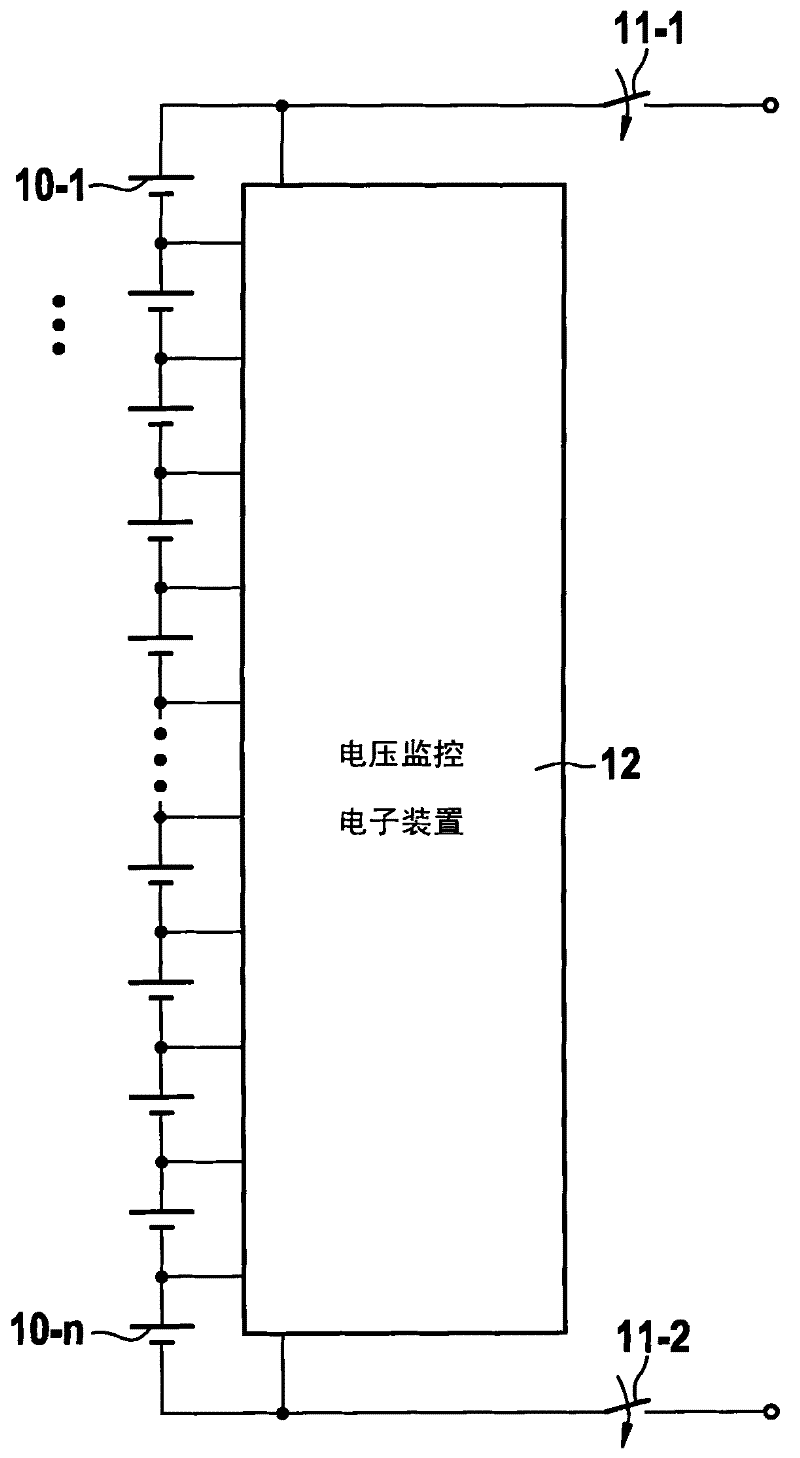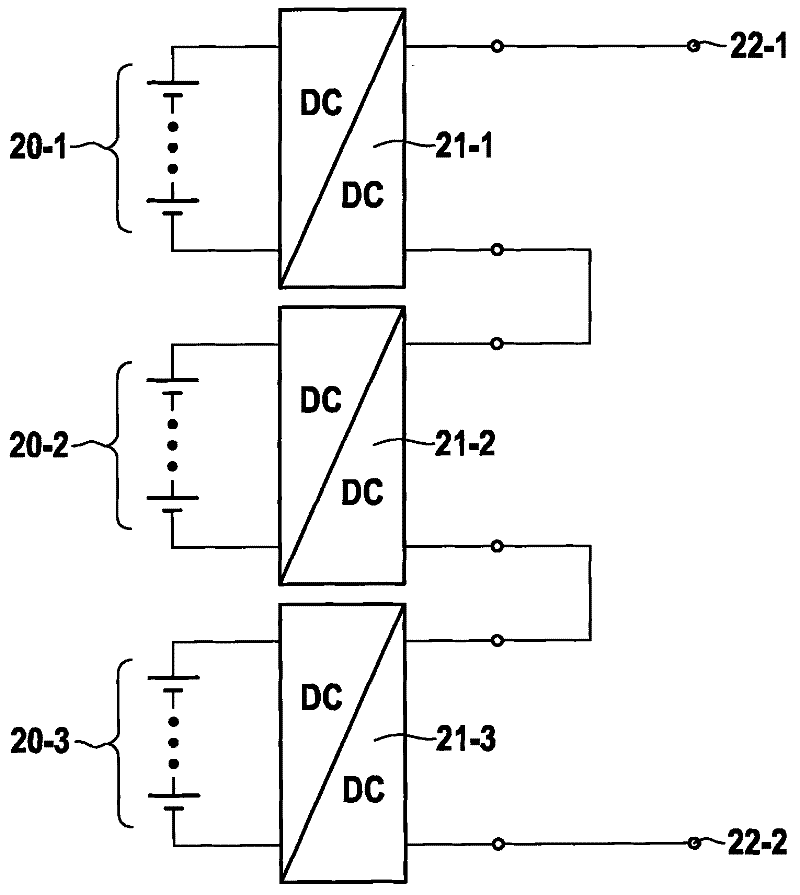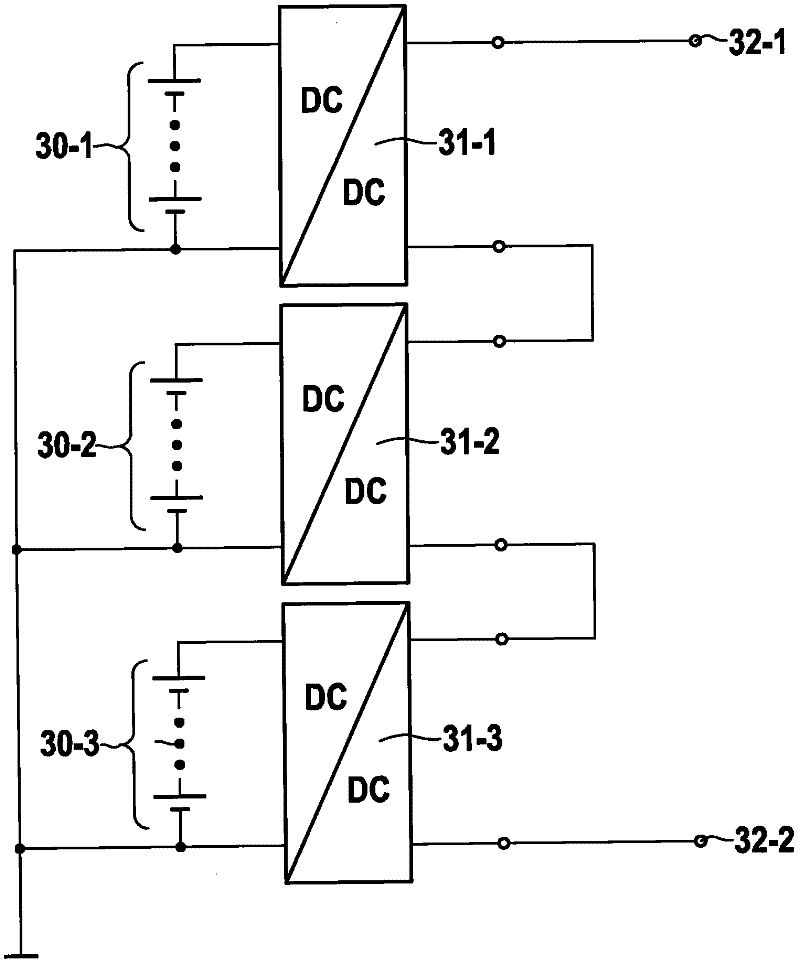Series circuit of switching regulators for energy transfer in battery systems
An energy transmission, battery system technology, applied in battery circuit devices, arrangement of multiple synchronous batteries, current collectors, etc., can solve the problem of increasing the price of battery system weight and volume, high logistics cost of battery system, high current and high voltage expensive And other issues
- Summary
- Abstract
- Description
- Claims
- Application Information
AI Technical Summary
Problems solved by technology
Method used
Image
Examples
Embodiment Construction
[0023] figure 2 A first embodiment of the present invention is shown. In the example three DC / DC converters 21-1, 21-2 and 21-3 are seen, but in real applications the number of DC / DC converters could be significantly higher. Each of the DC / DC converters 21-1, 21-2, and 21-3 is connected on the input side with one battery module 20-1, 20-2, 20-3, and these battery modules 20-1, 20-2 , 20 - 3 each have a plurality of battery cells connected in series in the example. as in figure 2 As can be seen in , according to the present invention, the output ends of the DC / DC converters 21-1, 21-2, 21-3 are connected in series, thereby serving as the The sum of the individual voltages produced yields the total voltage between the output terminals 22-1 and 22-2 of the device. The DC / DC converters 21-1, 21-2, 21-3 are constructed in a known manner and allow adjustment of the first and second The output voltage applied at the output either switches off the DC / DC converter 21 - 1 , 21 - 2 ...
PUM
 Login to View More
Login to View More Abstract
Description
Claims
Application Information
 Login to View More
Login to View More - R&D
- Intellectual Property
- Life Sciences
- Materials
- Tech Scout
- Unparalleled Data Quality
- Higher Quality Content
- 60% Fewer Hallucinations
Browse by: Latest US Patents, China's latest patents, Technical Efficacy Thesaurus, Application Domain, Technology Topic, Popular Technical Reports.
© 2025 PatSnap. All rights reserved.Legal|Privacy policy|Modern Slavery Act Transparency Statement|Sitemap|About US| Contact US: help@patsnap.com



